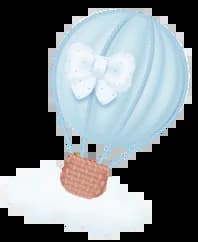Introducing solid foods to babies is a pivotal developmental step, yet it comes with its fair share of challenges. The importance of this transition lies in enriching their diet with essential nutrients, fostering motor skills, shaping taste preferences, and promoting independence. However, common hurdles include dealing with baby tantrums, texture aversions, food allergies, and growth-related feeding regressions. This blog’s primary focus is on addressing the widespread issue of managing baby tantrums during solid food introduction, exploring the underlying causes and offering practical strategies to make this crucial phase a positive and stress-free experience for both parents and their little ones.
Understanding Baby Tantrums
Baby tantrums are emotionally charged outbursts or displays of frustration and distress commonly observed in infants and young children. These tantrums can manifest as crying, screaming, fussiness, arching of the back, or even throwing objects. While they may seem like challenging behaviour, they are often a way for babies to communicate their needs or discomfort.
Understanding the triggers for baby tantrums during feeding is essential for effective management. Several factors can contribute to these outbursts:
- Hunger or Fatigue
- Overstimulation
- Frustration from Limited Communication
- Seeking Attention
- Discomfort or Pain
Understanding the potential consequences of baby tantrums during feeding is crucial for parents. These challenges can affect not only your baby’s nutritional intake and overall well-being but also your own stress levels and the overall mealtime experience. In the upcoming sections, we’ll explore strategies to effectively handle baby tantrums, ensuring that feeding time becomes a more enjoyable and positive experience for both you and your little one.
Preparation for Feeding
Feeding time is more than just nourishment; it’s a chance to build positive associations with food and strengthen the bond between you and your baby. Setting the stage for a positive feeding environment is vital to making mealtimes enjoyable for both of you.
Meal Planning and Food Selection
The foods you offer during mealtimes and how you introduce them can significantly impact your baby’s eating habits and preferences.
- By creating a positive feeding environment and making thoughtful choices in meal planning and food selection, you set the stage for successful, enjoyable mealtimes that nurture your baby’s healthy eating habits. In the following sections, we will explore strategies to handle baby tantrums during these well-prepared mealtimes.
Strategies to Handle Baby Tantrums While Feeding
Baby tantrums during feeding can be challenging, but with the right strategies, you can turn mealtime into a positive experience for both you and your baby. Here are some effective approaches to handle baby tantrums while feeding:
- Experimenting with Different Feeding Methods
- Creating a Routine
- Offering Choices and Involving Your Baby
- Avoiding Distractions
By implementing these strategies, you can effectively handle baby tantrums during feeding and create a positive mealtime experience that supports your baby’s healthy eating habits and overall development. In the following sections, we’ll explore more specific challenges and how to address them.
Navigating the world of baby feeding comes with its unique challenges, but it’s also an opportunity to foster a lifelong love for nutritious choices. When facing specific hurdles like food allergies or texture aversions, it’s crucial to identify potential allergens early, seek medical advice, understand developmental phases, and persistently introduce various textures. Recognizing when professional intervention is necessary, whether through a paediatrician or feeding specialist, ensures comprehensive care. Beyond these challenges, promoting healthy eating habits is paramount. Encouraging a positive attitude towards food, offering diverse nutritious options, modelling healthy behaviours, and transitioning to family meals can instil a lifelong appreciation for good nutrition. Remember, each child is unique, and patience, empathy, and adaptability are your allies on this journey towards nurturing healthy eating habits and overall well-being.
FAQ's
Q. Why do babies throw tantrums during solid food introduction?
Ans.Babies may throw tantrums due to hunger, fatigue, overstimulation, or difficulty communicating their needs. The transition to solid food can be overwhelming, especially if the texture or taste is unfamiliar. These tantrums are a natural form of expression during this developmental phase.
Q. When is the right time to start solid foods for babies?
Ans.Most babies are ready for solids around 6 months of age. Look for signs like head control, showing interest in food, and the ability to sit with support. Always consult your pediatrician before introducing new foods to ensure it’s the right time.
Q. How can I create a positive feeding environment?
Ans.Keep feeding sessions calm, consistent, and distraction-free. Sit with your baby, make eye contact, and speak encouragingly. Use soft lighting and offer food in a familiar setting. Creating a relaxed environment helps reduce anxiety and encourages positive associations with eating.
Q. What foods should I start with during solid introduction?
Ans.Begin with iron-rich foods like pureed meats, lentils, or fortified cereals. Also try mashed fruits, vegetables, and soft grains. Introduce one food at a time and observe for any allergic reactions. Keep textures smooth and mild to make the transition easier.
Q. How can I manage tantrums during mealtime?
Ans.Establish a feeding routine, keep distractions to a minimum, and offer limited choices to prevent overwhelm. Stay calm, even during outbursts. Use encouragement rather than pressure, and remember it’s okay to pause and try again later if your baby is upset.
Q. How do I know if my baby has a food allergy?
Ans.Watch for signs like rashes, vomiting, diarrhea, or swelling after trying a new food. Introduce allergens like eggs, peanuts, and dairy one at a time in small amounts. If you suspect an allergy, stop the food and consult your pediatrician immediately.
Q. What should I do if my baby refuses to eat solids?
Ans.Be patient and try again later. Offer a variety of textures and tastes. Let your baby touch and explore food without pressure. Sometimes it takes several tries before a baby accepts a new food. Keep mealtimes positive and stress-free.
Q. Can involving my baby in feeding decisions help reduce tantrums?
Ans.Yes! Allowing babies to choose between two food options or letting them try to self-feed builds independence and reduces resistance. Giving them some control in a structured way helps them feel more secure and involved during mealtime.
Q. Are feeding tantrums a sign of a bigger problem?
Ans.Occasional tantrums are normal, especially during transitions. However, if your baby consistently refuses food, loses weight, or shows signs of distress during meals, consult a pediatrician or feeding specialist. Persistent feeding issues may require professional evaluation and support.
Q. How can I encourage healthy eating habits from the start?
Ans.Offer a variety of nutritious foods, model healthy eating, and avoid using food as a reward. Maintain regular mealtimes and encourage family-style dining. Creating a balanced, positive relationship with food early on sets the foundation for lifelong healthy habits.
















